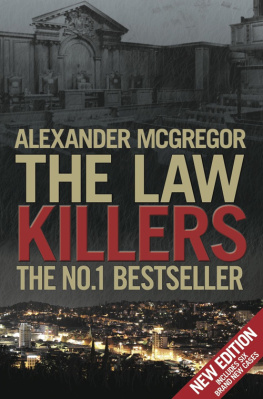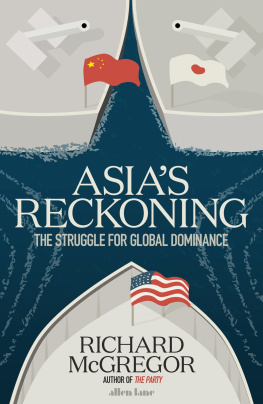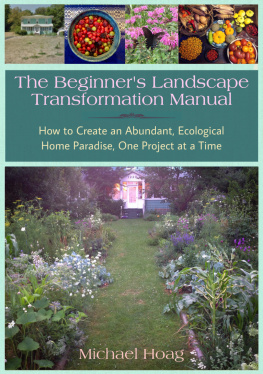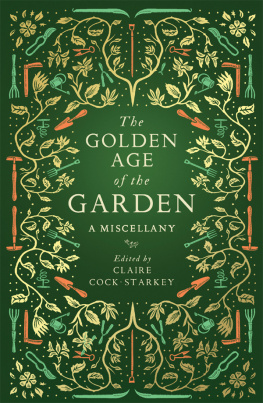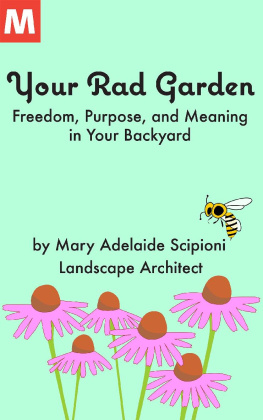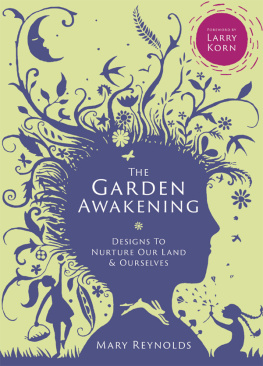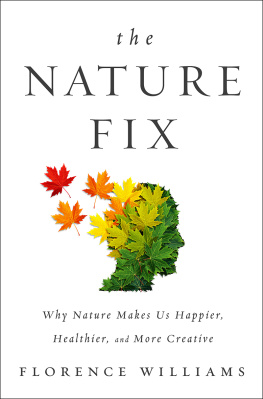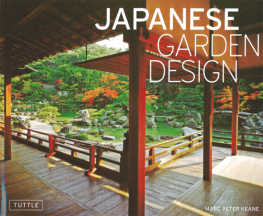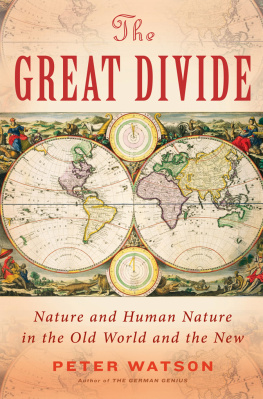BACK TO THE GARDEN
BACK TO THE GARDEN
Nature and the Mediterranean World from Prehistory to the Present

JAMES H. S. McGREGOR


Published with assistance from the foundation established in
memory of Calvin Chapin of the Class of 1788, Yale College.
Copyright 2015 by James H. S. McGregor.
All rights reserved.
This book may not be reproduced, in whole or in part, including
illustrations, in any form (beyond that copying permitted by
Sections 107 and 108 of the U.S. Copyright Law and except by
reviewers for the public press), without written permission from
the publishers.
Yale University Press books may be purchased in quantity for
educational, business, or promotional use. For information, please
e-mail (U.K. office).
Designed by Sonia Shannon.
Set in Janson type by Integrated Publishing Solutions.
Printed in the United States of America.
Library of Congress Cataloging-in-Publication Data
McGregor, James H. (James Harvey), 1946
Back to the garden : nature and the Mediterranean world from prehistory
to the present / James H. S. McGregor.
pages cm
Includes bibliographical references and index.
ISBN 978-0-300-19746-4 (hardback)
1. Human ecologyMediterranean RegionHistory. 2. Agriculture
Mediterranean RegionHistory. 3. Mediterranean RegionHistory. I. Title.
GF13.3.M47M34 2015
304.2091822dc23 2014022703
A catalogue record for this book is available from the British Library.
This paper meets the requirements of ANSI/NISO Z39.481992 (Permanence of Paper).
10 9 8 7 6 5 4 3 2 1
For Sallie, Ned, Raphael, Anna, and Leila
The world is not with us enough.
DENISE LEVERTOV
Contents
Acknowledgments
This is a wide-ranging book that engages scholarship in a host of academic fields. My own specialty is literary interpretation and cultural history. Within that broad area I have worked most often in the fields of material culture and the classical heritage. I have visited the Mediterranean repeatedly, lived for extended periods in Italy, and worked on two archaeological digs in the region. Under the direction of Eric and Carol Meyers of Duke University, I participated in excavations at Meiron in northern Israel. More informally and for a shorter period, I was able to work for Joseph C. Carter of the University of Texas on his excavations at Metaponto in southern Italy. I have published a series of books on world cities that includes volumes on Rome and Athens.
As I wrote and revised this book, I received help and encouragement from a number of people. I am especially grateful to Bill McKibben, Gary Snyder, Robert Torrance, and John R. McNeill, who read and responded to portions of the manuscript. Charles Platter, a specialist in Greek literature and philosophy, made corrections and suggestions in his area of expertise. My colleague at the University of Georgia Ari Lieberman corrected my Hebrew and helped me navigate the history of Judaism. Brock Baker refined my approach to Christian ecological thinking. I also received guidance from Carol Meyers, Joe Carter, and the philosopher of aesthetics Ellen Dissanayake. Alexi Worth read an early draft; his strong reaction dramatically reshaped the book. Harry Haskell, formerly classics editor for Yale University Press, read and reread an unruly early draft and helped give it character and definition. Bill Nelsons excellent maps have sharpened and grounded its argument. Successive classes in the literature and nature course that I taught for many years have been test audiences for successive versions. Wendy Strothman has been a constant champion of the project and an encouraging voice throughout. Steve Wasserman, Erica Hanson, Mary Pasti, and others at Yale University Press have combined unwavering support for the book and sure expertise through every phase of its publication.
The book that has finally taken shape is very different from the one I first imagined. Over the years, it has become more urgent, more argumentative, and more personal. There is a lot in it that my grandfathers, Noah Sylvanus Twigg and James McAlpine McGregor, both passionate and skilled gardeners, would recognize and appreciate. It has been supported and enriched in uncountable ways by my beloved family, to whom it is dedicated.
BACK TO THE GARDEN
Introduction
How Did We Get Here?
On a recent trip to Venice, my wife and I experienced high water. Since we were there in late summer, when the water is usually low, we were surprised and unprepared. So were the Venetians. The next days newspaper headlined a nightmare storm that paralyzed half the province. Seasonal high wateracqua altausually begins in November. Pushed by onshore winds, an amplified tide rolls through the narrow channels that link the Venetian lagoon to the Adriatic. When the tide turns, the wind holds some water against the shore, so with each succeeding high tide, the lagoon gets fuller. The flooding we were experiencing was caused by a heavy rainstorm. A combination of the two eventstorrential rain and wind-driven high waterhit Venice in 1966. The one-two punch nearly drowned the city. A return of that fatal combination is what Venetians dread.
Everyone knows that flooding on this devastating scale is a recent threat.rises above the sewer outlets, so rain pools in the streets and piazzas until the next tide. The water runs off only if the lagoon level falls enough.
Venice is the most Mediterranean of cities, not because it is typicalit is certainly not thatbut because it is directly linked to the sea and affected daily, even hourly, by the dynamics of sea winds and waves. Because of this unbreakable link, Venice is the canary in the mine for the entire Mediterranean basin. The citys health gives warning of things to come, and at this moment the bird is gasping for breath. Understanding how Venice came to be poised on the brink of disaster points the way to an evaluation of the whole region. Though not as imperiled as Venice, it is certainly under stress. On behalf of the Mediterranean as a whole, Venice poses this urgent question: When and how did our environment become so endangered?
A capsule history of Venice breaks down into two unequal parts. From its founding sometime in the late Roman imperial era to the end of the eighteenth century, it was an independent city-state. Since then it has been a mere city under the rule of outside forces. Napolon captured Venice in 1797 and stripped it of its assets before he deeded it to Austria. In 1870 the Austrians gave way to the Italians. None of these conquerors had much of an understanding of the city they took over. Their lack of comprehension should come as no surprise. Imagine a powerful, rich, and influential civilization that in 1800 had no use for horses and little use for the wheel. It had few machines more powerful than clocks and relied on human muscle for mobility. A metropolis without roads, it was surrounded not by fields and pastures but by expanses of water. What was any sensible person to think? The sensible Austrian and Italian planners who took control devoted their efforts to making Venice more like the mainland cities they knew.
The environmental crisis in modern Venice is the result of repeated attempts to fix something that was not broken originally but became damaged, perhaps irreparably, by ill-considered mending. The local artisans and managers who had guided the citys development and maintained its ecology for generations were replaced by outsiders who did not understand how Venice worked. The result of their misguided repairs splashes underfoot in the city today. Looking at the outline of Venice on a map, many people see the image of a fish. Like a fish, the city swims in the waters of the lagoon. But in a most unfishlike way, Venice nearly drowns in those waters on an annual basis. It is a fish on a leash, bound to the land by an umbilical causeway that force-feeds it an unending diet of visitors.
Next page

